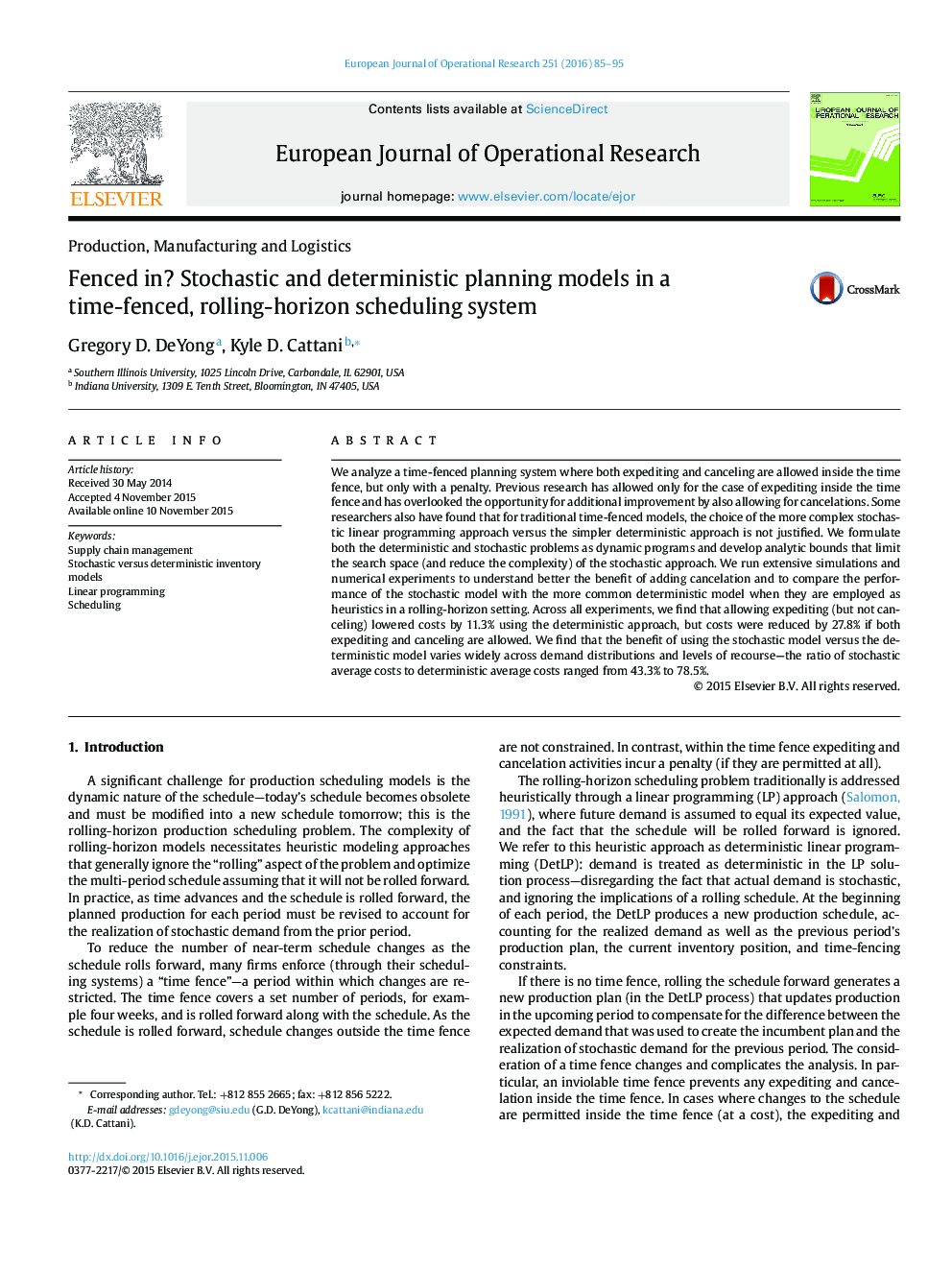| Article ID | Journal | Published Year | Pages | File Type |
|---|---|---|---|---|
| 480631 | European Journal of Operational Research | 2016 | 11 Pages |
•We analyze a time-fenced planning system with penalized expediting and canceling.•We formulate deterministic and stochastic dynamic programs and develop bounds.•Allowing both expediting and canceling lowered costs 28% versus 11% for expediting only.
We analyze a time-fenced planning system where both expediting and canceling are allowed inside the time fence, but only with a penalty. Previous research has allowed only for the case of expediting inside the time fence and has overlooked the opportunity for additional improvement by also allowing for cancelations. Some researchers also have found that for traditional time-fenced models, the choice of the more complex stochastic linear programming approach versus the simpler deterministic approach is not justified. We formulate both the deterministic and stochastic problems as dynamic programs and develop analytic bounds that limit the search space (and reduce the complexity) of the stochastic approach. We run extensive simulations and numerical experiments to understand better the benefit of adding cancelation and to compare the performance of the stochastic model with the more common deterministic model when they are employed as heuristics in a rolling-horizon setting. Across all experiments, we find that allowing expediting (but not canceling) lowered costs by 11.3% using the deterministic approach, but costs were reduced by 27.8% if both expediting and canceling are allowed. We find that the benefit of using the stochastic model versus the deterministic model varies widely across demand distributions and levels of recourse—the ratio of stochastic average costs to deterministic average costs ranged from 43.3% to 78.5%.
